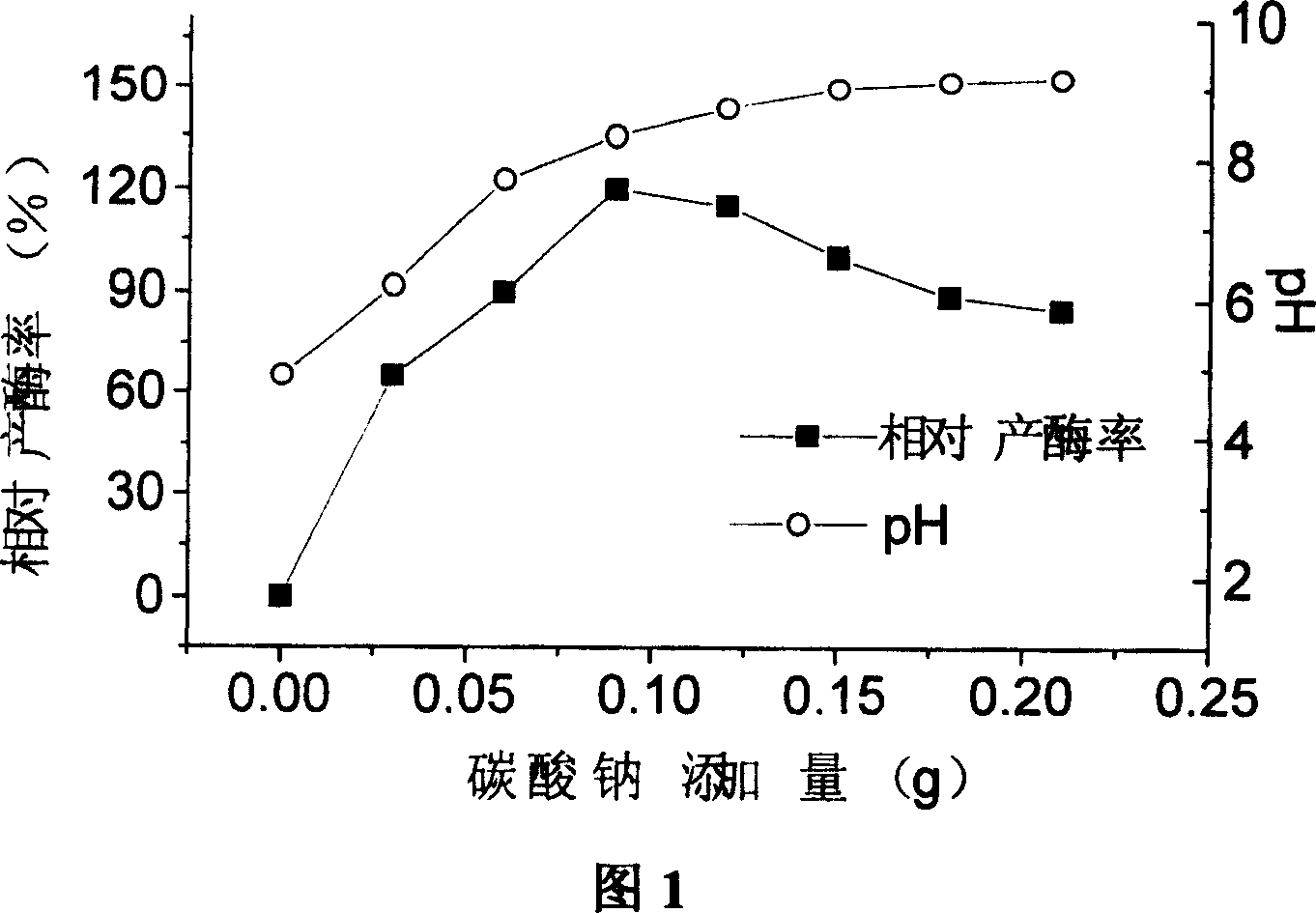Alkalophilic bacterium and production for solid state fermentation of alkali pectase from alkalophilic bacterium
An alkalophilic bacteria, solid state fermentation technology, applied in the field of bioengineering
- Summary
- Abstract
- Description
- Claims
- Application Information
AI Technical Summary
Problems solved by technology
Method used
Image
Examples
Embodiment 1
[0010] Example 1: Effects of different pectin-containing biomass and different humidity of medium on enzyme production
[0011] Add 1 times, 2 times, 3 times, 4 times water respectively in 5g (dry weight) containing pectin solid biomass, dissolve peptone 0.15g, potassium dihydrogen phosphate 0.23g, sodium carbonate 0.09g in every water, stir Uniformly, cultured statically at 35°C for 72 hours. The results are shown in Table 1.
[0012] Table 1: Effects of various pectin-containing biomass and medium humidity on enzyme production
[0013] pectin-containing biomass
[0014] Note: The enzyme activity is determined by the DN8 method, and one enzyme activity unit (u) is defined as: the enzyme required to degrade sodium polygalacturonate to produce 1 μmol of galacturonic acid per minute under the reaction conditions of 55°C and pH 10.5 amount.
Embodiment 2
[0015] Embodiment 2: the influence of different nitrogen sources on producing enzyme
[0016] Add 3 times the weight of the nutrient solution to the sugar beet meal, the composition of the nutrient solution is: 1.0% of different nitrogen sources, 0.15% of potassium dihydrogen phosphate, and 0.6% of sodium carbonate. Sugar beet pulp and nutrient solution were sterilized at 115°C for 15 minutes respectively, mixed uniformly at a weight ratio of 1:3, inoculated with liquid seeds, and cultured statically at 35°C for 72 hours. The results are shown in Table 2.
Embodiment 3
[0017] Embodiment 3: the impact of different sodium carbonate additions on producing enzyme
[0018] Add 15 milliliters of nutrient solution to 5 grams of sugar beet meal, and the composition of the nutrient solution is: 1.0% of yeast extract, 0.15% of potassium dihydrogen phosphate, and 0-1.5% of sodium carbonate. Sugar beet pulp and nutrient solution were sterilized at 115°C for 15 minutes respectively, mixed uniformly at a weight ratio of 1:3, inoculated with liquid seeds, and cultured statically at 35°C for 72 hours. The results are shown in Figure 1. When the sodium carbonate is 0.6%, the enzyme production rate is the highest, reaching 3500 units / g dry vegetable dregs.
[0019] Table 2: Effects of different nitrogen sources on enzyme production
[0020] nitrogen source
PUM
 Login to View More
Login to View More Abstract
Description
Claims
Application Information
 Login to View More
Login to View More - R&D
- Intellectual Property
- Life Sciences
- Materials
- Tech Scout
- Unparalleled Data Quality
- Higher Quality Content
- 60% Fewer Hallucinations
Browse by: Latest US Patents, China's latest patents, Technical Efficacy Thesaurus, Application Domain, Technology Topic, Popular Technical Reports.
© 2025 PatSnap. All rights reserved.Legal|Privacy policy|Modern Slavery Act Transparency Statement|Sitemap|About US| Contact US: help@patsnap.com

